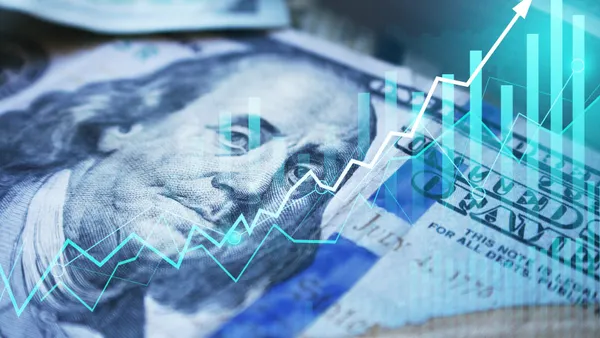For many companies, having excess cash on the books isn't ideal. Financial management theory holds that companies carrying too much cash have a lower return on assets, a higher cost of capital, and are more likely to be targets of a hostile takeover.
But whether you hang onto that cash or redistribute it through share buybacks or dividends is a decision CFOs must make with a new calculation in mind: how the pandemic has impacted the company.
Standard tactics
CFOs typically have three options for getting excess cash off the books: redistributing it to shareholders by repurchasing shares, issuing one-time dividends or increasing recurring dividends.
For example, in the U.S., most companies historically have chosen to get rid of their excess cash that could not otherwise be deployed by using buybacks, according to Fortuna data. Between 2014 and 2019, spending on buybacks by the largest repurchasers including Cisco, Wells Fargo and PepsiCo reached an all-time high of more than $3 trillion. At the same time, share repurchases increased significantly compared to organic investment, cash acquisitions and dividends.
The choice of how to use excess cash is often not an either-or decision, but rather some combination of the above. And it typically falls to the CFO to have a clear understanding of what mix of options are appropriate, depending on the strategies and circumstances of their companies.
For Steve Fray, CFO of Goldmoney, a publicly listed precious metal financial service and technology company, the dividend-or-buyback decision is on a case-by-case basis. For example, the company has done three normal course issuer bids over the past three years; the primary objective was to stimulate the market.
"Goldmoney is thinly traded, so part of the strategy for using share buybacks was to create activity on the stock," says Fray. "Shares were being traded below book value, so we felt that it was a better use of our excess capital to execute the buybacks."
Similarly, in terms of dividends, it's on a quarter-by-quarter basis, and depends on earnings.
"Our first dividend issue was when the company was less than five years old and was a result of a spin-off of a subsidiary," he says. "We ended up with $32 million in gains, so we gave a dividend not in cash, but in shares, with the newly listed sub."
In comparison, Sun Life Financial, a federally regulated Canadian financial institution, has a consistent dividend policy formulated for a specific type of investor.
"Our investors like the very consistent returns of a regular dividend, and we base that on earnings," says Leigh Chalmers, senior vice president and head of investor relations and capital management at Sun Life. "If we don't see any strategic opportunities out there, say for an acquisition — and we're quite disciplined with our capital deployment— it has to meet hurdle rates and be on strategy ... If we don't see those opportunities, then we would then look to doing buybacks to reduce excess capital."
COVID-19 impact
With 2020 now in the rearview mirror, the CFO's decision around whether to issue a dividend or repurchase shares is affected by the pandemic.
"With COVID," says Fray, "we're seeing better than normal returns, as investors look for more safe haven types of investments. With our excess cash, we expect mainly to do buybacks and expand our investments into precious metals, with some portion of dividends."
By contrast, companies that needed federal financial aid to get through the worst of 2020 might have to rethink any form of buyback or dividend for the foreseeable future.
According to Howard Johnson, managing director and Canada market leader at Duff and Phelps, for companies that have been beneficiaries of government assistance, the use of financial assistance raises the question of proper governance.
"In redistributing cash by dividends or buybacks, these companies have to be very cautious about giving the perception that public funds are lining the pockets of shareholders," he says.
Meanwhile, other companies have been forced into a holding pattern when it comes to increasing dividends or buying back shares. On March 13, the Office of the Superintendent of Financial Institutions in Canada halted any increase in dividends and share buybacks for all federally regulated financial institutions. Similarly, on Sept 30, the Federal Reserve extended restrictions on shareholder payouts by the largest banks through the end of the year. (The restrictions were first put in place at the end of June and apply to 33 of the largest U.S. banks.)
The moratorium is about security and equity, says Chalmers. "First, the regulations are intended to ensure that we have capital stability and liquidity throughout the pandemic. They want us to hold capital on our balance sheets. Second, since banks were given some relief around capital requirements initially, they didn't want them in turn to take that capital and give it back to the market."
When it comes to declaring dividends or buying back shares, clearly one size won't fit all. The investment objectives of the shareholders and other factors like how thinly the stock is traded, its current book value, and the availability of alternative uses of cash will all weigh into the buyback-or-dividend decision.
However, in 2020, COVID-19 changed the options for many companies. For some, issuing dividends and repurchasing shares were necessary due to cash windfalls, and will continue well into 2021, while others will be forced to hold capital tight as the coronavirus impact runs its course.





















